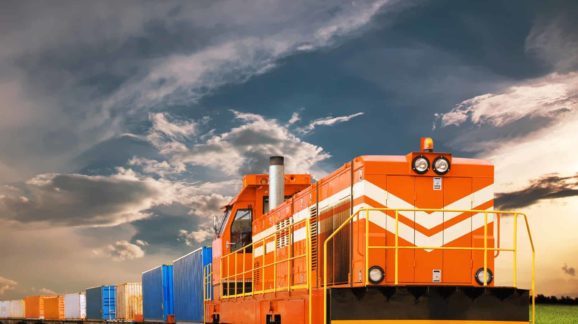Department of Transportation Should Rescind Crew-Size ‘Featherbedding’ Proposal

 Unions in the railroad industry have a long history of “featherbedding,” the pejorative term for the practice of creating pointless make-work jobs. Most infamous was the case of the firemen, important workers in the 19th and first half of the 20th century who shoveled coal into the boilers of steam locomotives. With the introduction of diesel locomotives in the 1930s, firemen became obsolete. But unions successfully kept the fireless firemen on trains either through shrewd collective bargaining or convincing state legislators to pass “full-crew laws” that legally mandated the employment of these useless workers. This absurd practice continued through the 1980s.
Unions in the railroad industry have a long history of “featherbedding,” the pejorative term for the practice of creating pointless make-work jobs. Most infamous was the case of the firemen, important workers in the 19th and first half of the 20th century who shoveled coal into the boilers of steam locomotives. With the introduction of diesel locomotives in the 1930s, firemen became obsolete. But unions successfully kept the fireless firemen on trains either through shrewd collective bargaining or convincing state legislators to pass “full-crew laws” that legally mandated the employment of these useless workers. This absurd practice continued through the 1980s.
The days of the firemen may be behind us (although some railroads still use the occupational title “fireman” to refer to trainee engineers), but featherbedding is alive and well. Unions and their allied politicians have been working—and probably clocking overtime—to revive the corrupt full-crew laws of yesteryear.
In 2016, the Federal Railroad Administration (FRA) proposed a rule that would have required all trains—with few exceptions—be staffed by at least two crewmembers. The ostensible rationale was to prevent a repeat of a deadly derailment that occurred three years earlier in Canada. But the FRA was unceremoniously forced by the White House Office of Management and Budget to admit it had no evidence showing that two-person train crews were safer than one-person crews.
Further complicating matters was the fact that Congress had required, and FRA had enforced, a multi-billion dollar, unfunded equipage mandate for positive train control, a suite of communication and automation technologies designed to reduce human error. Ultimately, as I have argued, railroads should be free to fully automate—i.e., adopt “driverless” trains—when technology permits. The current Department of Transportation is gung-ho on self-driving cars for good reason: the potential benefits to society are enormous. They should extend their pro-innovation philosophy to all modes of transportation, including freight rail.
Fortunately, in 2017, the FRA relegated the proposed rule to long-term action status—meaning no action was to be expected for at least 12 months—and setting the stage for rescission by an administration and Department of Transportation that prides itself on its deregulatory philosophy. Unfortunately, despite talking the talk and prodding from myself and others, the Department of Transportation has yet to walk the walk and actually rescind the proposed rule.
This is causing unnecessary headaches. While the train crew rulemaking has stalled at the federal level, unions have turned to the states. Dozens of states are now entertaining featherbedding bills. As I wrote in a letter for the record to the Maryland Senate Finance Committee last month, these state laws may well be unenforceable and preempted under federal law at 49 U.S.C. § 20106(a)(2)(C) as unreasonable burdens on interstate commerce. But this is for the courts to decide.
Secretary Elaine Chao and the Department of Transportation could make this much less murky by simply rescinding the 2016 proposed rule and stating that states may not set crew size minimums, which would then clearly preempt these featherbedding laws under 49 U.S.C. § 20106(a)(2)(B) and save everyone the time and expense of protracted litigation. Why Secretary Chao—who was previously the secretary of labor—and her department have not decided to pluck this low-hanging fruit is anyone’s guess. This is a simple fix worth taking the minimal effort to complete.
Action from the Department of Transportation wouldn’t necessarily close the door on efforts to revive corrupt full-crew laws, as Rep. Don Young (R-AK), Alaska’s lone congressman, recently reintroduced a federal crew size minimum bill with the predictable support of two Republicans from New York and New Jersey and 14 Democrats. This bill should be opposed. But rescinding the federal proposed rule would greatly reduce the odds of a confusing and costly patchwork taking hold across the country that would needlessly drive up rail costs and inhibit innovation.